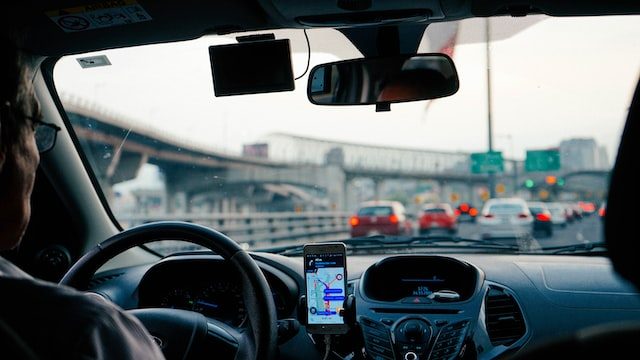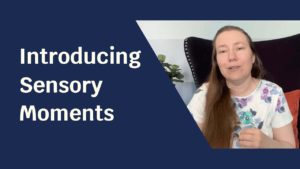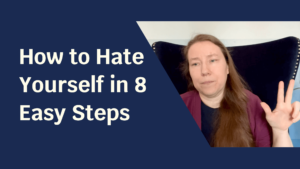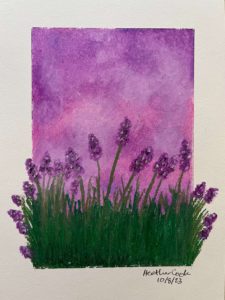Relationships and driving?
Healthy communication is a lot like being a safe driver.
Recently I was driving and another vehicle was coming up quickly behind me as we were approaching a curve in the road and I needed to slow down a bit. I got the impression that they wanted me to speed up because they were coming up on me so quickly, and so close, so I lightly tapped the brakes. Not enough to actually brake the car, but just enough to turn on my brake lights so they would know that I was not going to speed up and they could adjust and we could both stay safe. At that moment, it occurred to me that this is a lot like a healthy conversation.
Unsafe drivers, and unhealthy communicators, maneuver without warning, too fast for the other person to make useful adjustments.
In both safe driving and healthy communication, each person sends signals to the other person about their intentions in time for the other person to adjust what they are doing.
Unsafe drivers, and unhealthy communicators, maneuver without warning, too fast for the other person to make useful adjustments. This often leaves the other person confused, anxious, or injured.
Here are a few driving signals as metaphors for healthy communication. (My apologies to every other country, as all of these references are using US-centered driving standards.)
Turn signals — small adjustments
Turn signals are indications of our wants, needs, and other things that are going on inside that other people can’t see.
They let others know your intentions far enough in advance for them to adjust what they are doing. For example, as a driver you might need the car behind you to slow down so that you can slow down to make a safe turn.
In relationships, it’s not that something big needs to change, or that you need to completely get out of a relationship, an event, a responsibility, etc. but you might need to tweak something.
That might involve telling someone that a sensory issue is bothering you, and asking for an adjustment.
Or telling someone that what they’re saying is not coming across well, and talking about that early on rather than waiting until it’s bothered you enough that you can’t deal with it anymore.
Brake lights — big changes
Brake lights are hard stops with another person. It could mean the end of a conversation, or leaving a situation, or even the end of a relationship, and can come abruptly if there haven’t been turn signals beforehand to give adequate warning.
When you’re in a relationship and everything seems to be going just fine, and then all of a sudden the other person tells you that you’re too much and they need out of the relationship, they weren’t giving you useful turn signals early enough for you to do anything about it.
Or when you’re dealing with some sensory stimulus that is hurtful and overwhelming, and you’re dealing with it and dealing with it and dealing with it and not saying anything, and then all of a sudden you can’t stand it anymore, and you explode, or lash out, or leave in a panic, or make a proclamation that you “can’t deal with this anymore!” and the other person is like, “where did that come from?” You weren’t giving turn signals early enough for the other person to make useful adjustments. Hence the buildup became a brake light.
Steering wheel wave — “I’m a safe person”
As a driver, I’ll give the two finger steering wheel wave to other drivers or pedestrians to let them know that I’ve seen them and that they don’t have to be as concerned while they’re walking down the side of the street, or driving by me on a narrow road, because they have more confidence I’m not going to run into them.
This is giving signals to the people around me that I am a safe person and that they have reason to trust my intentions, at least in this limited circumstance.
In relationships, there are lots of ways you can signal to the other person that you see them and are aware of them and are not trying to hurt them; that you’re a safe person. At least in this circumstance and for this moment. Signals like that might be:
It could be asking about their day or about something that they’re interested in, even when the topic isn’t of interest to you, as a way of showing that you care about the person.
Responding to someone with openness and curiosity when they tell you that something you said or did hurt them.
It could be accommodating someone else’s sensory needs, even when it’s not an issue for you.
It could be asking about their day or about something that they’re interested in, even when the topic isn’t of interest to you, as a way of showing that you care about the person.
It could be doing something nice for them as an outward sign that you were thinking about them and care about them.
When you give signals that you are a safe person to be around, and especially when you follow that through with actions consistently over time, it helps communication and relationships both in the moment and in future encounters.
Headlights — identity and needs
At night, or in low-visibility conditions, drivers turn on headlights to signal to the drivers around them, “this is where I am” so they can make adjustments and stay safe.
The relationship equivalent is providing identity signals in situations where relevant information may not be obvious (to others). It’s letting people know, “this is who I am,” or “this is what I need,” so the other person doesn’t have to guess, wonder, or assume the wrong thing, hurting feelings in the process.
This could be things like providing pronouns up front.
Using your own preferred language if, and when, you choose to disclose something about yourself. (Identity-first language, etc.)
It might be explaining that you have a tendency to be particularly direct because you’re autistic, or that unexpected movements are Tourettes tics. (If you choose to disclose, and you never have to.)
It could be letting people know you’re sensitive to fluorescent lights, and are wearing this hat to block some of the light that is giving you a headache.
Or explaining that you’re looking away to reduce stimulation so you can think about what they said, not to be rude.
You don’t have to get into all the reasons, or explain any more than you are comfortable with; even a partial explanation often helps.
When you veer from what people expect, they are going to try to make sense of it in the best way they can, and the easiest way is to jump to conclusions and fill in missing information with assumptions. That’s not evil, that’s a normal part of how our human brains work.
These signals let people know what is going on when you act, look, communicate, or move in a way that is different from the perceived norm.
When you veer from what people expect, they are going to try to make sense of it in the best way they can, and the easiest way is to jump to conclusions and fill in missing information with assumptions. That’s not evil, that’s a normal part of how our human brains work.
However, if you can offer them information to fill in the gaps, they will make fewer assumptions, and things tend to go better. (That doesn’t work in toxic relationships, but I have a different driving metaphor for that.)
These signals help people navigate our needs and ways of being in the world so they can feel more comfortable around us, and we can have better experiences with them. The alternative is assuming that they should just know, and getting disappointed, frustrated, or angry, when they don’t.
Backup beep — abusive or toxic relationships
Oh, the backup beep. Sigh. My auditory sensitivities would love to banish the backup beep into another realm. However, grudgingly, I do admit that there is a safety-oriented purpose to it.
Disclaimer: I’m not talking about the versions they’ve lately been putting into small passenger vehicles to let the driver know they’re in reverse (those I hate). I’m talking about the backup beep on large vehicles as it was originally designed.
The driver of a large vehicle often does not have a complete field of vision around the vehicle, so the beep is a signal to people nearby that the driver is about to make a maneuver in which they will not be able to see everything, and may not see you, so you need to take care of yourself and get out of the way.
When you see such signs, they are indicators telling you to backup, get away, that this person is not going to take care of you so it’s up to you to take care of yourself and get out of their way.
Tying this to relationships, backup beeps are the signs of an abusive or toxic relationship. And like that bleeping beep, those signals are often painful experiences.
When you see such signs, they are indicators telling you to backup, get away, that this person is not going to take care of you so it’s up to you to take care of yourself and get out of their way.
There is a lot of good info on the Internet about how to tell if you’re in an abusive or toxic relationship, so I’m not going to get into that here. My point is about what to do when you see these signs: take care of yourself!
Lane markers — setting boundaries
Painted lines on the road give information to drivers about where they can expect to drive safely, so that everyone can navigate the road with more confidence that they are not going to hit someone, or be hit.
When everyone drives within the painted lines, and moves between them at agreed-upon intervals (dashed lines, intersections) and in agreed-upon ways (turn signals, etc.) it takes far less energy to navigate the road and everyone has less anxiety.
In relationships, we can let other people know what is okay to us, and what’s not okay. At its essence, this is all setting boundaries really is.
Of course, not everyone always follows those expectations and accidents happen, but they are significantly reduced by having these visible boundaries that all drivers agree to try their best to follow.
In relationships, we can let other people know what is okay to us, and what’s not okay. At its essence, this is all setting boundaries really is.
It’s not being controlling, making grand pronouncements, or imposing huge requirements on other people. It is simply giving indications of what you’ll put up with and what you won’t, what you need, what you’ll do for others, when, or how, or under what circumstances, etc.
If you’re interested in more about setting healthy boundaries, Dr. Faith Harper has helpful perspectives with practical guidance that is ND-affirming.
Relationships are a skill you can get better at
All of these healthy relationship skills are skills that we can learn and get better at. I’ve gotten soooo much better at all of these since my autism diagnosis.
As I sought to understand how relationships actually work through these types of cognitive explanations, rather than people expecting me to “pick it up” and complaining when I didn’t, I learned more in the two or three years following my diagnosis than in the 3.5 decades before that. And now, 7 years post-dx, I have significantly better relationships than ever before in my life.
No doubt we could extend this metaphor to other driving and relationship situations, and if you would like to, feel free to leave comments below with your own thoughts. I hope something in all of this has been intriguing.




